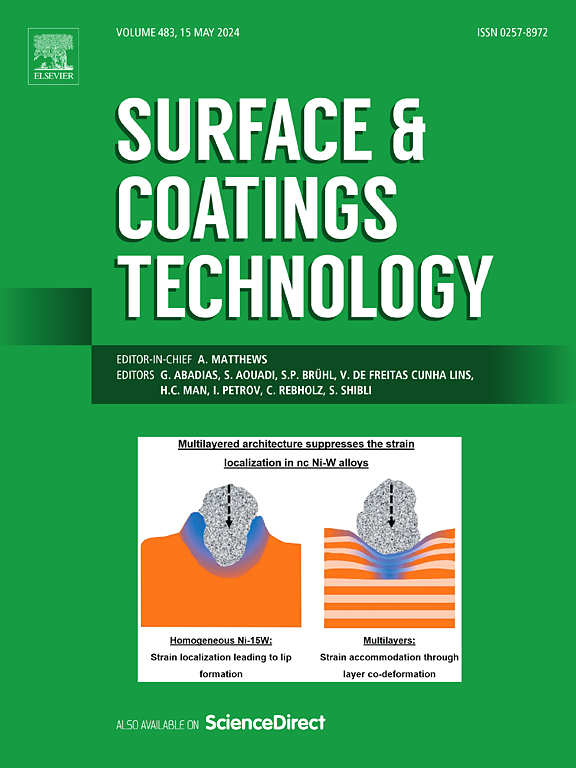Machine learning enabled the prediction of γ′-depleted depth during interdiffusion of bond-coated IN792 superalloy
IF 6.1
2区 材料科学
Q1 MATERIALS SCIENCE, COATINGS & FILMS
引用次数: 0
Abstract
Eight machine learning (ML) frameworks were established for predicting γ′-depleted zone (GPDZ) evolution in MCrAlY-coated IN792 superalloys, based on the 301 experimental datasets from high-temperature diffusion tests. Thereinto, XGBoost model with Bayesian optimization demonstrated the best performance with a high R2 of 0.9696 and a low mean absolute error of 3.579. SHAP analysis on the results identified temperature/time as the dominant kinetic drivers, while Ni/Co/Ta suppressed the GPDZ growth and Fe/Cr/Al accelerated the γ′ depletion. The trained model was employed to predict growth kinetics of GPDZ in changes of time and compositions and also was evidenced to direct the coating design with reduced degradation of substrate microstructure. This data-driven approach constructs a strongly efficient tool for the composition-microstructure correlation, overcoming the high-time-cost limitation on the traditional thermodynamic methods in multi-component systems.

机器学习能够预测包覆IN792高温合金在相互扩散过程中的γ′耗尽深度
基于301个高温扩散试验数据集,建立了8个机器学习(ML)框架,用于预测mcraly涂层IN792高温合金中γ′-贫区(GPDZ)的演化。其中,经贝叶斯优化的XGBoost模型表现最佳,R2高,为0.9696,平均绝对误差低,为3.579。对结果的SHAP分析表明,温度/时间是主要的动力学驱动因素,而Ni/Co/Ta抑制了GPDZ的生长,Fe/Cr/Al加速了γ′的耗损。该模型被用于预测GPDZ在时间和成分变化下的生长动力学,并被证明可以指导涂层设计,减少基体微观结构的降解。该方法克服了传统热力学方法在多组分体系中存在的时间成本高的局限性,为组分-微观结构的关联分析提供了一种高效的工具。
本文章由计算机程序翻译,如有差异,请以英文原文为准。
求助全文
约1分钟内获得全文
求助全文
来源期刊

Surface & Coatings Technology
工程技术-材料科学:膜
CiteScore
10.00
自引率
11.10%
发文量
921
审稿时长
19 days
期刊介绍:
Surface and Coatings Technology is an international archival journal publishing scientific papers on significant developments in surface and interface engineering to modify and improve the surface properties of materials for protection in demanding contact conditions or aggressive environments, or for enhanced functional performance. Contributions range from original scientific articles concerned with fundamental and applied aspects of research or direct applications of metallic, inorganic, organic and composite coatings, to invited reviews of current technology in specific areas. Papers submitted to this journal are expected to be in line with the following aspects in processes, and properties/performance:
A. Processes: Physical and chemical vapour deposition techniques, thermal and plasma spraying, surface modification by directed energy techniques such as ion, electron and laser beams, thermo-chemical treatment, wet chemical and electrochemical processes such as plating, sol-gel coating, anodization, plasma electrolytic oxidation, etc., but excluding painting.
B. Properties/performance: friction performance, wear resistance (e.g., abrasion, erosion, fretting, etc), corrosion and oxidation resistance, thermal protection, diffusion resistance, hydrophilicity/hydrophobicity, and properties relevant to smart materials behaviour and enhanced multifunctional performance for environmental, energy and medical applications, but excluding device aspects.
 求助内容:
求助内容: 应助结果提醒方式:
应助结果提醒方式:


